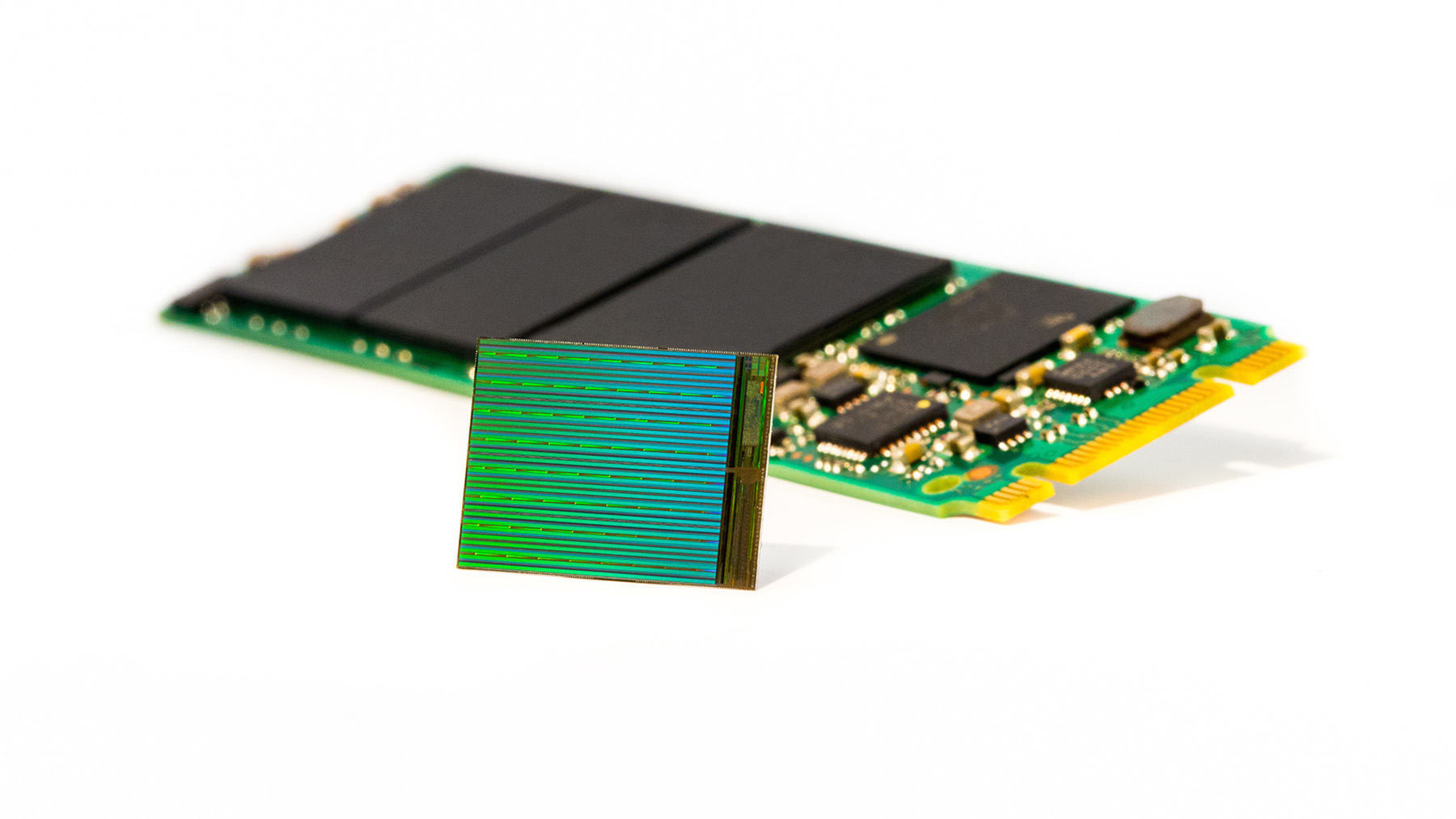Intel, Micron make Ultrabooks with 10TB SSDs a possibility
Extending Moore's Law for flash storage

Using floating gate cells, Intel and Micron announced manufacturing has started on its 3D NAND flash storage and should be in products within next year, a move that could make 10TB solid state drives a reality.
Like how city skyscrapers help accommodate more capacity by building upwards compared to flat, single family homes, Intel says that 3D NAND technology allows cells to be stacked vertically to allow more storage on the same footprint.
Both companies claim that their 3D technology, based on floating gate cells, delivers up to three times the capacity of existing 3D NAND storage technology. Intel says that 75% of a terabyte can fit in a fingertip-sized package.
"The new 3D NAND technology stacks flash cells vertically in 32 layers to achieve 256Gb multilevel cell (MLC) and 384Gb triple-level cell (TLC) die that fit within a standard package," Brian Shirley, Micron Technology VP of Memory and Storage Solutions, said. "These capacities can enable gum stick-sized SSDs with more than 3.5TB of storage and standard 2.5-inch SSDs with greater than 10TB."
Benefits
In addition to increasing storage capacity, a benefit of vertically stacking cells together is that this will increase endurance and performance of the chips as the individual cell dimensions can be larger.
Micron claimed that the move to 3D technology will help "enable Moore's Law for many, many generations to come" as "we're reaching a path of diminishing return" on planar flash.
Bill Leszinske, General Manager for Business Development and Strategy at Intel's New Devices Group, said that the company designed 3D NAND to be cheaper than 2D NAND, and that the "first-generation 3D NAND is architected to achieve better cost efficiencies than planar NAND."
Sign up to the TechRadar Pro newsletter to get all the top news, opinion, features and guidance your business needs to succeed!
Micron has already begun sampling of its 3D NAND to select partners. Pricing for the new chips was not announced.
- Read our buying guide for the best SSD options
